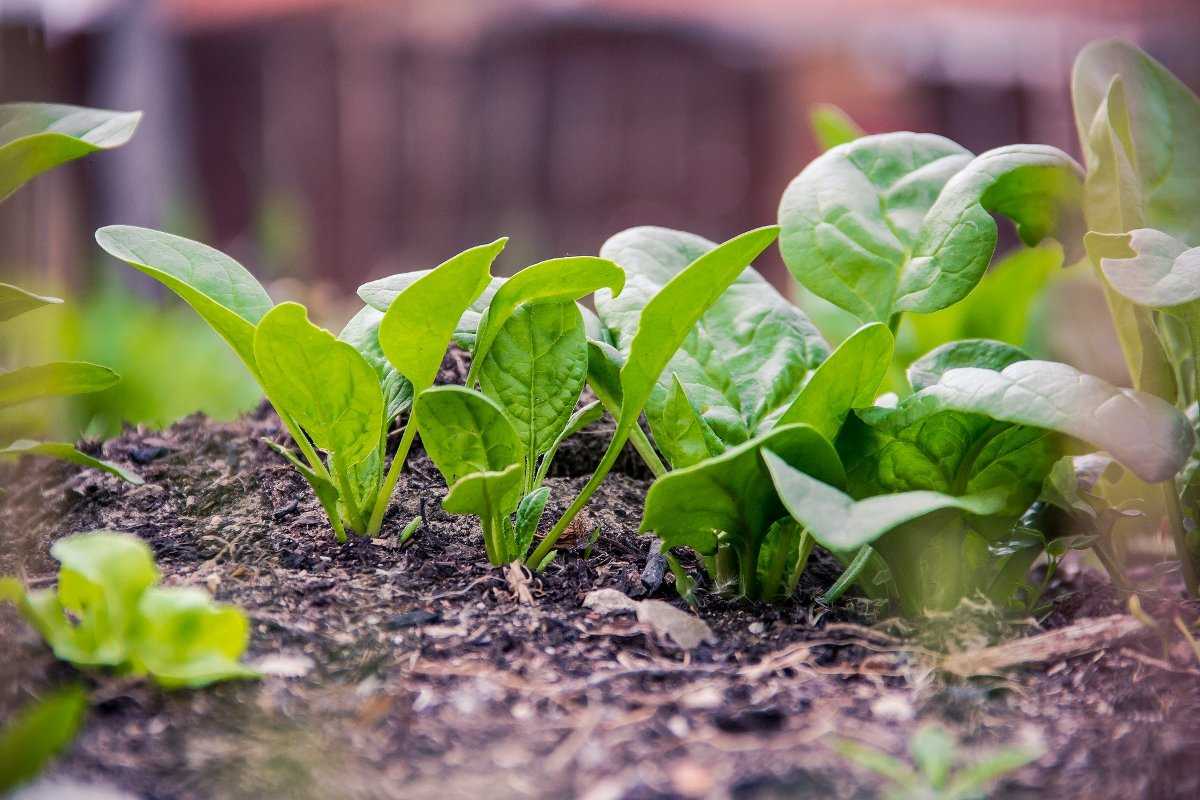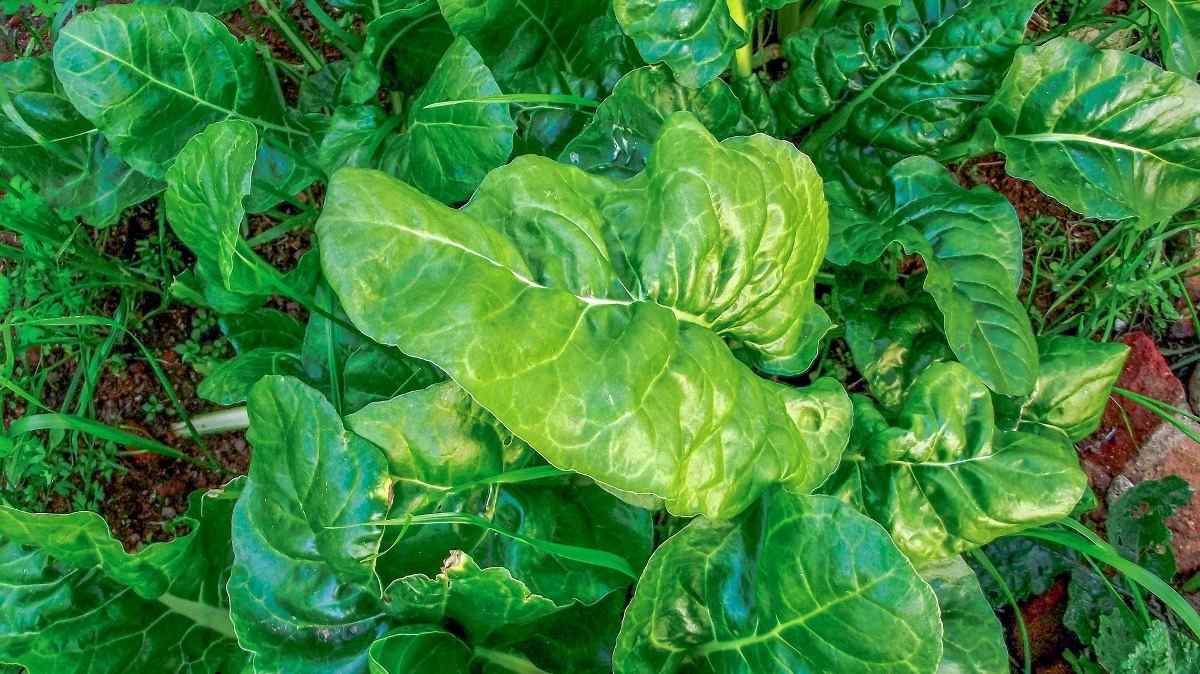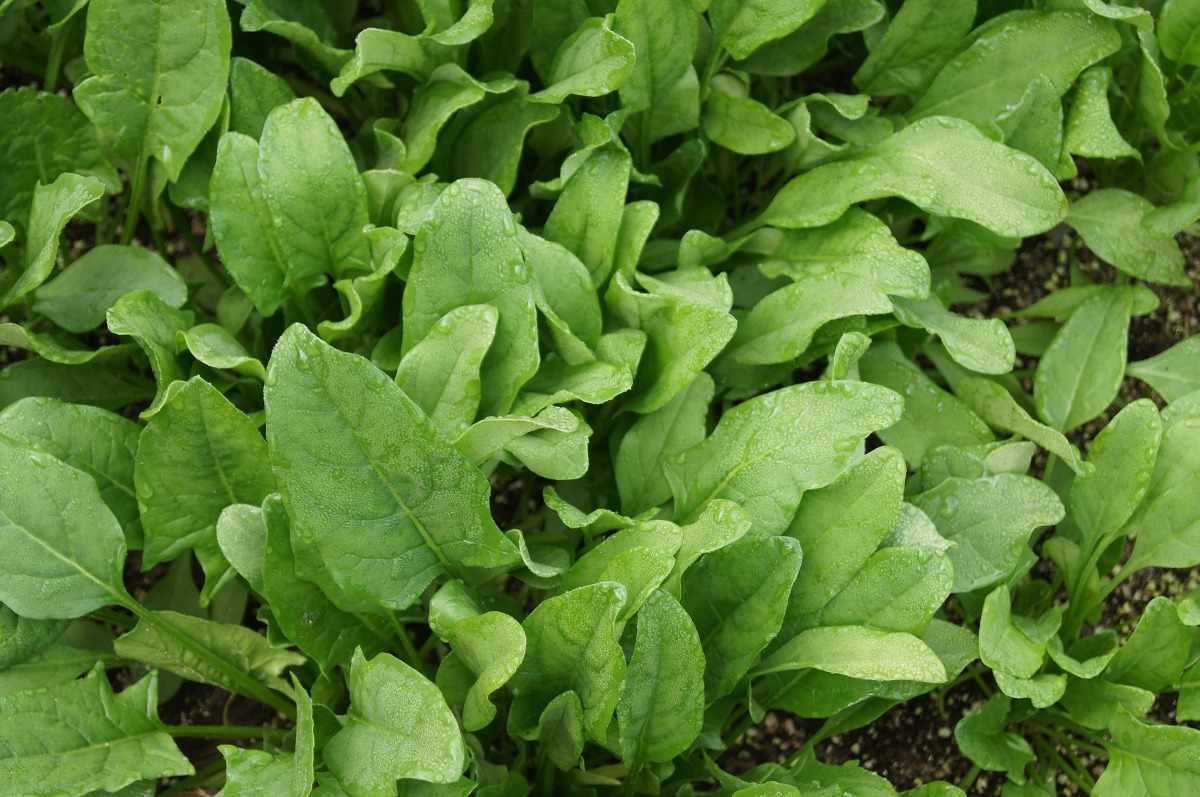Growing Spinach in Raised Beds: Spinach is one of the common leafy vegetables grown worldwide for its high nutritious value. Spinach belongs to the Amaranthaceae family, and its scientific name is Spinacia oleracea. Spinach is one of the few vegetables with beets and chard that prefers a neutral to alkaline soil pH level 7.0 or above.
A guide to growing spinach in rasied beds, spinach plant spacing
Growing spinach is one of the best things about having a garden. Raised beds are easier to maintain, particularly for people with limited mobility, and also have less perennial weed pressure. The disadvantages are that they tend to require more frequent irrigation and have a high initial cost of construction. Those obstacles aside, raised beds can be a great choice for anyone interested in vegetable gardening.
Spinach varieties for growing spinach (palak) in raised beds
Bloomsdale Long Standing is a popular heirloom variety because it’s a big producer and matures quickly. Bloomsdale’s plant leaves are crinkled, dark, and glossy.
- Baby’s Leaf Hybrid plant has flat, tender, sweet leaves that mature early.
- Tyee is a vigorous grower and bolts late. Leaves are dark green and semi-savoyed.
- Indian summer has high-yielding, savoyed plant leaves with excellent flavor.
- Melody’s dark-green, ruffled leaves are exceptionally disease-resistant.
Location and set-up raised bed for growing spinach
For optimum plant health and productivity, most vegetables receive at least 8 hours of full sun each day. Avoid low, wet areas where the soil can stay soggy. Good soil is the single most important ingredient for a good vegetable garden. Raised beds give you advantage over a regular garden because when you fill a raised bed, you can fill it with a blend of soil that’s superior to the native soil in your yard.
If you are planning to put a raised bed in a space occupied by a lawn, lay down a sheet of cardboard, or a piece of landscaping fabric to kill off the grass first. After about 6 weeks (or less, depending on the weather), the grass must be dead and will be much easier to remove.
Choosing the right wood for raised beds
Many people are concerned about the safety of their wood frame. First, rest assured that CCA (Chromated copper arsenate) pressure-treated wood is banned, as it was known to leach arsenic. To ensure that the wood lasts, there are many options;
Regular pressure-treated lumber sold today has a mixture of chemicals applied to stop the moist soil. More expensive woods, such as cedar, contain natural oils that prevent rotting and make them more durable. They are more expensive to buy, but they will last several more years. And choosing thicker boards can make the wood last longer. Avoid using railroad ties, as they can be treated with creosote, which is toxic.
Cheap raised garden beds
Vegetable beds can be made from any material but the cheapest and easiest method to build a raised bed is to use free waste timber. And be careful not to use timber which has a chemical treatment or a lot of paint as these can contain lead which can end up in your soil. Also, old railway sleepers aren’t a good idea as they are soaked in creosote which won’t do you much good either.
Height and size of the raised beds for growing spinach
The height of raised beds mainly depends on the cost of the raised beds, the condition of the soil under the bed, the depth of soil needed for what you want to grow and creating a comfortable height.
If your raised bed is placed on a hard surface such as a concrete patio area you will want a deep bed to give you sufficient depth of soil for your plants to grow. Raised beds are generally 3 to 4 feet wide by about 6 to 8 feet long. Then this will allows you to easily reach into the raised bed from the side to plant and dig and weed, without having to step into the garden where you risk compacting the garden soil.
Planting spinach in raised beds
Spinach plant does best when plant grown in moist, nitrogen-rich soil. Then keep the soil moist and after the seeds germinate thin them to stand 3 to 5 inches apart. Most gardeners like to do this in some passes to determine the strongest plants to save.
Spinach seed is planted a one-half inch deep in the soil. The best soils are sandy loams, but a variety of soil types will produce good spinach. Sandy soils work well in winter months as they drain fast, but they need to be amended with compost so that fertility is sufficient for leaf growth. Heavier soils can be quite productive if they are well-drained and also watered carefully.
You should not miss the Climbing Vegetable Plants.

Amending clay soils with compost improves drainage and spinach is particularly sensitive to saturated soil conditions, but it is only moderately salt sensitive. It is fast-growing and short-lived and matures its leafy foliage in 7 weeks. It does not use much fertilizer, as it is a relatively small plant when fully grown. When ready to harvest, you can either cut the whole plant or just remove the outer leaves. If you carefully cut the plant above the growing point, you could often obtain a second crop.
During periods of warm temperatures and long days (for example in the spring) or when spinach plants don’t get enough water or nutrients, they are likely to produce seed stalks before making sufficient foliage growth and this is called bolting. Spinach then quickly goes to seed.
Amend the raised bed with compost before spinach planting. Soak seeds overnight in warm water to start the germination process. The next day plant seeds 1 inch apart in rows spaced 12 inches apart and you can also broadcast seeds on top of the bed.
Process of growing spinach in raised beds
- Plant spinach during the cool weather of spring and fall season.
- Space spinach plants 12 inches apart in fertile, well-drained soil with a pH level of 6.5 to 7.0.
- Start off the growing season right by mixing in several inches of aged compost or other rich organic matter into the native soil.
- Check soil moisture often or consider using a soaker hose to maintain moisture levels consistent.
- For tender and rapid leaf production, plant feed regularly with water-soluble plant food.
- Harvest spinach starting with the outermost leaves once plant leaves are large enough to eat.
Spinach plant spacing in a raised beds
When growing spinach in a raised garden bed (soil loosened 20-24 inches deep), plant spinach on 8 inches (20 cm) centers (seeds or seedlings 8 inches (20 cm) apart in every direction).
Watering spinach plant
Growing spinach requires regular watering, particularly in spring heatwaves. Drip irrigation system works fine, but most spring ephemerals do best when their leaves get wet. On a hot day, a splash of overhead water in the heat of the afternoon cools the plant leaves and the soil under the plants and drops the overnight temperatures right into the 60-70°(15-21° C) groove most cool-season plants thrive in.
Fertilizing spinach plants
Fertilize lightly about every 2 to 3 weeks with 6-6-6 nitrogen-only fertilizer. The numbers of fertilizer indicate the percentage of, in order, nitrogen, phosphorus, and potassium. Minor nutrients that are iron, boron, zinc, and manganese are often included.
Caring for spinach plants in the raised bed garden
Use mulch to stretch the intervals between plant watering. Plants can be harvested for 2 to 3 weeks. When a seed stack appears, cut and use the entire spinach plant. To ensure a continual supply, make monthly sowing though the weather is cool.
You may also like the How to Grow Baby Corn in Containers.

Spinach pests
- Generally, spinach is a relatively pest-free plant. Unfortunately, mine is not one of them and we have Spinach Leaf Miners (Pegomya hyoscyami). Leaf miners are tiny about ¼ inches flies that lay their eggs on the undersides of plant leaves.
- The leaf cuticles protect them from parasitoid wasps and garden insect predators.
- Leaf miners are prevalent wants careful monitoring and quick action to prevent wider outbreaks later in the season. Also, mechanical controls work best with leaf miners.
- Floating row covers can be used to exclude adults from the plant leaves, but they won’t keep out leaf miners that hatch inside the row covers (from last year’s beets).
- At the first sign of tunneling in the plant leaves, check the undersides of leaves, and look for rows of 7 to 8 white, sliver-shaped eggs. Smear them over the bottom of the leaf with a finger, also spray with a garlic-soap spray. Pick off leaves with extensive tunneling; and you will see small grubs in the corner of the pocket. Put them on a piece of sheet metal or in a plastic bag in the sun for a couple of hours, then compost.
- Spinosad, an organic actinobacterium, can be applied to the leaves, but you have to spray the undersides of the leaves, and the pests have to hatch and ingest the bacterium to become infected.
Care and maintenance when growing spinach in raised beds
Thin spinach seedlings to 6 inches apart when they are 3 inches tall. Thinning helps the plants grow large and reduces the number of diseases such as rust on the plants, by giving the spinach plant more room to grow. Keep the soil cool and moist by watering regularly and mulching with a layer of organic mulch, that is straw or untreated grass clippings, after thinning. If the young plant leaves are pale green or yellow-colored, spray the plants with fish emulsion fertilizer. This quick reacting organic fertilizer will add nitrogen to help green up the plant leaves.
In case if you miss this: Shade Vegetable Gardening Ideas, Tips, Techniques.
Watch for aphids, leaf miners, and flea beetles on spinach leaves. Wash off aphids with an insecticidal soap spray and cover spinach plants with a floating row cover to prevent flea beetle and leaf miner damage.
If growing to overwinter, cover the fall-seeded spinach crop in November with a floating row cover and about 4 to the 6-inch thick layer of straw. And check in early spring for signs of growth and remove the straw.
Spinach plant harvesting and storage
Spinach plant leaves are ready to harvest as soon as they are big enough to eat. Plant harvest by removing the outer leaves and allowing the center leaves to grow larger; this will allow the plant to keep producing. Picking the outer leaves gives the advantage of briefly delaying bolting. In spring, when spinach plants are about to bolt, pull the entire plant at once to enjoy the leaves before they become bitter.
Advantages of growing spinach in raised beds
A raised garden bed is also called garden boxes. Raised garden beds are great for growing small plots of vegetable plants and they keep pathway weeds from garden soil, prevent soil compaction, and provide good drainage, and serve as a barrier to pests that are slugs and snails.

Raised bed gardening makes gardening more accessible to those who have trouble kneeling down or bending over as you can design them to be at a height that allows the garden in a more comfortable way. Some garden designs have benches, while others have wider edges that allow you to perch on the side and reach into the garden. The recommended height of a raised bed is at least 10 inches, but you can keep stacking boards until you are happy with the height.
One biggest benefit of raised bed gardens is that the gardener controls the soil quality by choosing what’s added into the vegetable garden. This is great news for those who want to place their raised bed on pavement or gravel or those who are worried about the quality of the soil underneath the raised bed. If a raised bed is placed over hard-packed or clay soil, the roots of the plants, particularly root vegetables, will hit a wall as they try to grow downward. Raising the garden up higher ensures that plants are reaching into the healthy, friable soil that’s been placed inside.
You can increase the height of the raised bed so that bunnies and groundhogs are not able to nibble. You can use row cover and nets to prevent certain bad insects and birds from accessing plants.
You may apply this information for growing palak on raised beds in backyards, growing palak on terrace in raised beds, growing palak in polyhouse in raised beds, and growing palak in blacony with raised beds. Incase if you are interested: How to Pollinate Vegetable Gourds by Hand.